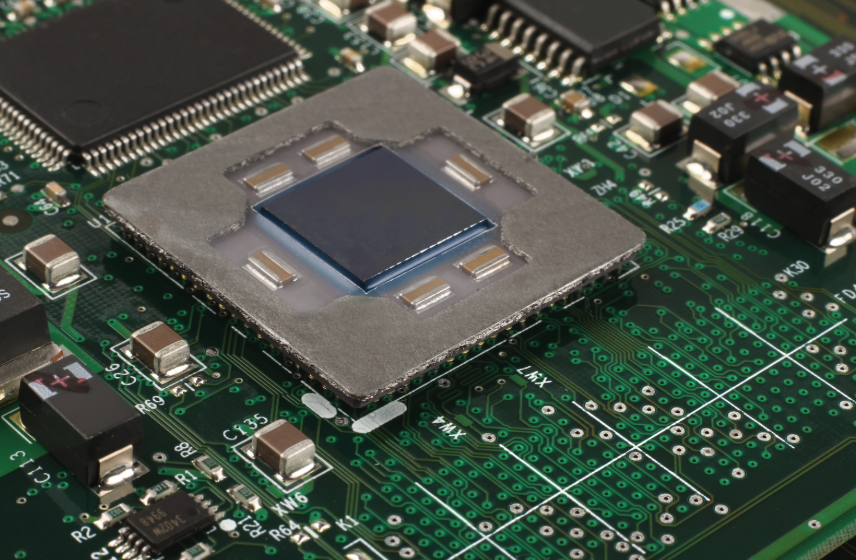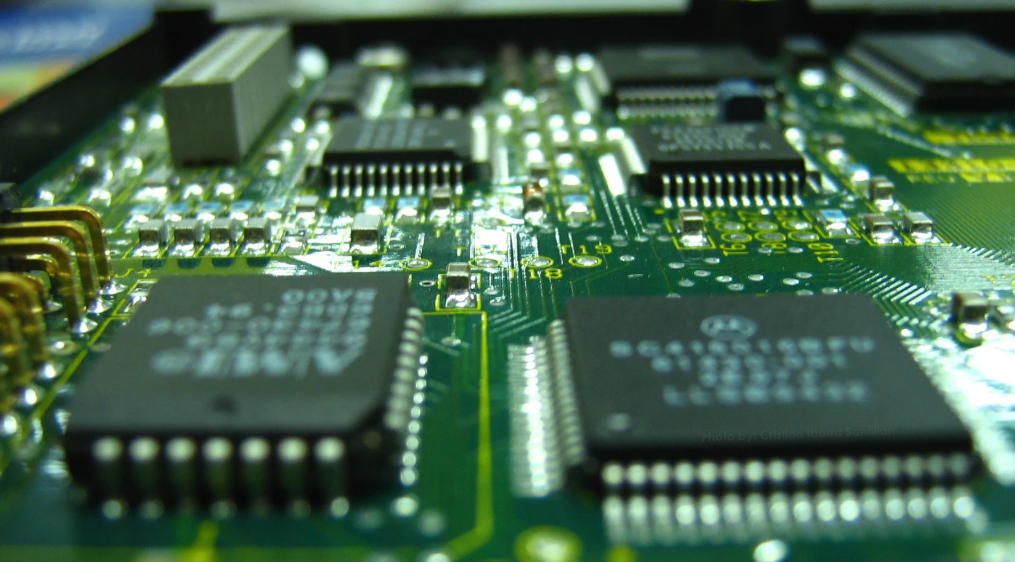What is Moore’s Law?

More from the Category
In 1965, Intel co-founder Gordon Moore made a prediction that would shape the trajectory of modern technology. He observed that the number of transistors on an integrated circuit doubled roughly every two years and led to exponential increases in computing power and efficiency. This principle, known as Moore's Law, became more than just a prediction — it evolved into a guiding force for innovation in the semiconductor industry.
For decades, Moore's Law has driven rapid advancements in technology. From the rise of personal computers to the explosion of smartphones and cloud computing, its influence is seen in nearly every aspect of modern electronics. It has set the pace for innovation and compelled engineers to design faster, smaller, and more efficient chips.
However, as transistors approach atomic scales, the industry faces growing challenges in maintaining this relentless pace. Despite these obstacles, the principles behind Moore's Law continue to inspire new breakthroughs, ensuring its legacy as a cornerstone of technological progress.
This article delves into what is Moore's Law, its impact on the electronics industry, the challenges it faces, and the innovative approaches shaping the future of computing.
What is Moore’s Law?
At its core, Moore’s Law is an observation about the exponential growth of technology. First articulated by Gordon Moore in 1965, the law states that the number of transistors on an integrated circuit doubles approximately every two years. This doubling translates to increased processing power, greater efficiency, and reduced costs for electronic devices.
While not a physical law of nature, Moore’s Law has acted as a self-fulfilling prophecy and driven innovation in the semiconductor industry. It provided a clear target for engineers and manufacturers and set the pace for technological advancement for decades.
The Evolution of Moore’s Law
Originally, Moore’s observation was published as a paper predicting that integrated circuits would become cheaper and more powerful at an exponential rate. By the 1970s, this principle had been widely adopted by the semiconductor industry. Over time, Moore’s Law became synonymous with technological progress.
What Does Moore’s Law Mean for Technology?
The practical implications of Moore's Law are vast. Doubling transistor density has enabled:
· The miniaturization of electronics, from room-sized computers to handheld smartphones.
· Cost reductions that make advanced technologies more accessible.
· Continuous improvements in fields like artificial intelligence, gaming, and cloud computing.
By driving innovation at such a rapid pace, Moore’s Law has not only defined the growth of the semiconductor industry but also shaped the digital era as we know it today.
The Influence of Moore’s Law on the Semiconductor Industry

Moore’s Law has been a guiding principle for the semiconductor industry for nearly six decades, and established a roadmap for innovation that has driven rapid advancements in microprocessors, integrated circuits, and consumer electronics. This influence extends beyond technical achievements to shape business strategies, competitive dynamics, and market expectations.
Driving Microprocessor Innovation
Moore’s Law revolutionized microprocessor design because doubling the number of transistors allowed chips to become more powerful while consuming less energy. From the introduction of Intel’s 4004 processor in 1971 to today’s multi-core CPUs, the relentless pace of innovation inspired by Moore’s Law has made computing faster, smaller, and more efficient.
The increase in transistor density has also enabled specialized processors, such as GPUs and AI accelerators, that have driven breakthroughs in machine learning, real-time rendering, and data analytics, too.
Shaping Industry Roadmaps
Moore’s Law didn’t just set technical expectations — it also became a benchmark for industry planning. Semiconductor manufacturers aligned their research and development efforts to keep pace with this exponential growth, which led to collaborative innovations, such as photolithography, FinFET transistors, and extreme ultraviolet (EUV) lithography in chip manufacturing.
The law’s predictive nature also introduced regularity into product development cycles, and this consistency established trust in the industry while enabling the rapid adoption of new technologies.
Fostering Competition and Collaboration
Moore’s Law intensified competition among semiconductor companies and spurred them to innovate or risk falling behind. At the same time, it encouraged collaboration between manufacturers, toolmakers, and researchers to overcome technical challenges.
Impact on Consumer Electronics
The ripple effects of Moore’s Law are most visible in consumer electronics, where the exponential growth in processing power and efficiency enabled the rise of portable devices. Smaller transistors meant smaller, more powerful chips, which have allowed devices to incorporate advanced capabilities like high-resolution displays, AI-powered assistants, and 5G connectivity.
Expanding the Ecosystem
Beyond processors, Moore’s Law has impacted the development of sensors, memory chips, and other critical components. By fostering innovation, guiding roadmaps, and shaping consumer expectations, it has left an indelible mark on the industry and continues to influence its direction. While the pace of progress is slowing, the influence of Moore’s Law remains central to the evolution of technology.
Challenges in Sustaining Moore’s Law
For decades, Moore’s Law served as a blueprint for the exponential growth of computing power. However, as transistors approach atomic scales, maintaining this rapid pace of innovation has become increasingly difficult. The semiconductor industry now faces significant technical, economic, and physical barriers that challenge the continued relevance of Moore’s Law.
Physical Limitations
One of the primary obstacles to sustaining Moore’s Law is the fundamental constraints of physics. As transistors shrink to nanometer and sub-nanometer scales, they encounter quantum effects such as quantum tunneling, where electrons can pass through barriers that should contain them. This phenomenon undermines the reliability of transistors and limits further miniaturization.
Additionally, smaller transistors generate more heat, and dissipating this heat becomes a critical challenge. Excessive thermal buildup can degrade performance and reduce the lifespan of chips, which makes it difficult to achieve the expected performance gains.
Economic Challenges
The cost of manufacturing advanced semiconductors has skyrocketed as feature sizes shrink. Developing cutting-edge lithography tools like extreme ultraviolet (EUV) lithography requires massive investments, with some estimates suggesting that building a single advanced fabrication facility can cost upwards of $20 billion. These escalating costs are unsustainable for many companies, which has left few players — Intel, TSMC, and Samsung — capable of competing at the leading edge.
Diminishing Returns
As transistor scaling approaches its limits, the performance improvements from each new generation have started to decline. Historically, smaller transistors delivered simultaneous gains in speed, energy efficiency, and cost. However, recent advancements have often focused on one or two areas at the expense of others, leading to diminishing returns.
Design Complexity
As chips become more complex, designing and testing them has grown exponentially more challenging. Modern processors feature billions of transistors, each interconnected in intricate layouts. Ensuring functionality, performance, and reliability at this scale requires advanced design tools and extensive verification processes, which add time and cost to development cycles.
The End of Classical Scaling
Classical transistor scaling, based on reducing the physical size of components, is nearing its practical end. The industry has reached the limits of traditional silicon-based technology, and transitioning to alternative materials or architectures presents new challenges. While innovations like 3D chip stacking and chiplet designs offer promising solutions, they often require entirely new manufacturing techniques and supply chains.
Overcoming the Challenges
Despite these hurdles, the semiconductor industry is finding ways to adapt and innovate:
· Advanced materials like graphene and silicon carbide offer potential paths for further miniaturization and performance gains.
· 3D architectures, such as vertically stacked transistors and chiplets, enable increased functionality without relying solely on traditional scaling.
· Emerging paradigms like quantum computing and neuromorphic chips represent entirely new approaches to computing, and offer pathways beyond the limitations of Moore’s Law.
Alternative Approaches and the Future Beyond Moore’s Law

As Moore’s Law approaches its physical and economic limits, the semiconductor industry is turning to alternative approaches to sustain progress in computing performance.
Advanced Materials
The limitations of silicon have spurred the exploration of alternative materials with superior properties. These materials aim to overcome the challenges of miniaturization while improving performance and energy efficiency:
· Graphene is a single layer of carbon atoms with exceptional electrical conductivity and heat dissipation capabilities.
· Silicon Carbide (SiC) is known for its ability to handle high voltages and temperatures, so is ideal for power electronics and advanced computing.
· Gallium Nitride (GaN) is a promising material for high-performance and low-power applications, especially in high-frequency devices.
These materials could extend the lifespan of Moore’s Law-like advancements and enable breakthroughs in both traditional and emerging fields like AI and IoT.
3D Architectures and Chip Stacking
While horizontal transistor scaling has slowed, 3D architectures offer a promising alternative. By stacking multiple layers of transistors vertically, chip manufacturers can increase density and performance without reducing the size of individual transistors. Technologies like 3D NAND flash and 3D packaging are already demonstrating the potential of this approach.
In addition, chiplets — modular components that can be combined on a single substrate — are gaining traction. This approach simplifies manufacturing, reduces costs, and allows for custom configurations tailored to specific workloads.
Quantum Computing
Quantum computing represents a fundamental shift away from classical transistor-based systems. Instead of binary bits, quantum computers use qubits, which can represent multiple states simultaneously. This capability enables quantum systems to perform complex calculations at speeds unattainable by classical computers.
While still in its infancy, quantum computing has the potential to revolutionize fields like cryptography, materials science, and machine learning. By sidestepping the limitations of Moore’s Law, quantum systems could redefine the future of computation altogether.
Neuromorphic Computing
Inspired by the human brain, neuromorphic computing seeks to replicate neural networks in hardware. This approach relies on specialized architectures optimized for tasks like pattern recognition, image processing, and AI workloads. Neuromorphic chips use significantly less power than traditional processors.
Photonic and Optical Computing
Photonic and optical computing uses light instead of electrons to process data, and because light travels faster and generates less heat, it operates with higher speeds and energy efficiency.
The Future Beyond Moore’s Law
While the traditional trajectory of Moore’s Law may be slowing, its spirit continues to inspire innovation. By embracing new materials, architectures, and computing paradigms, the industry is ensuring that progress in computing performance remains robust. The transition beyond Moore’s Law signals not the end of exponential growth, but the beginning of a new era defined by creativity, collaboration, and technological breakthroughs.
No matter what new semiconductor technologies are developed, Microchip USA will continue to be the premier distributor of board-level electronics. From memory to SoCs, and everything in between, our industry experts can source the components you need — and we specialize in supplying hard-to-find and obsolete components. Get a quote for the parts you need today!